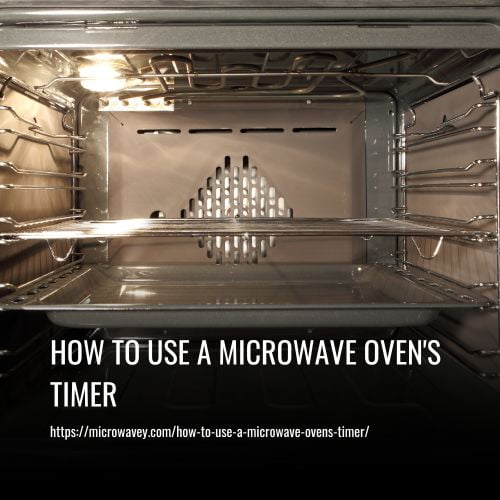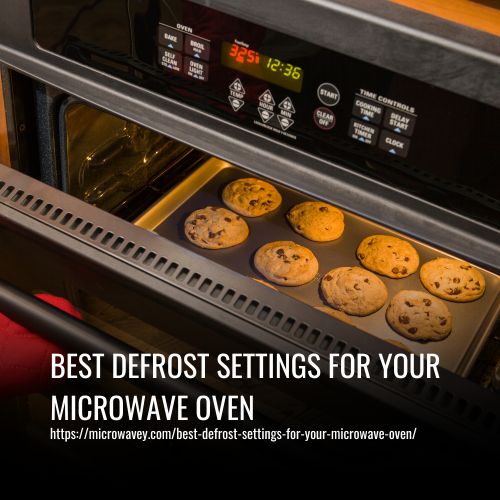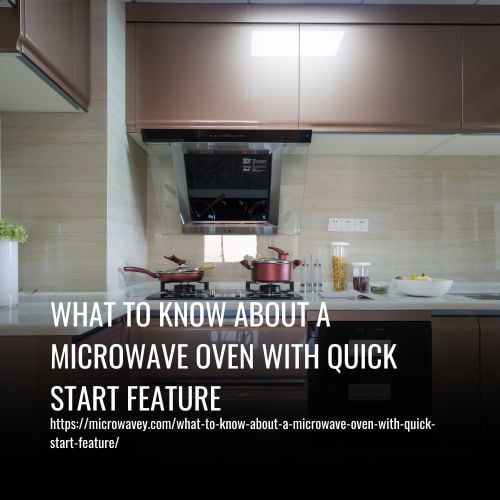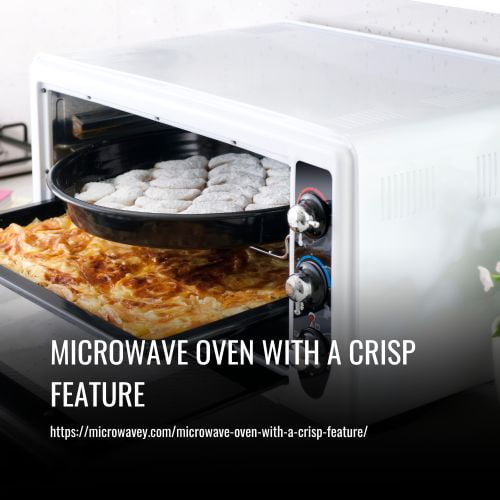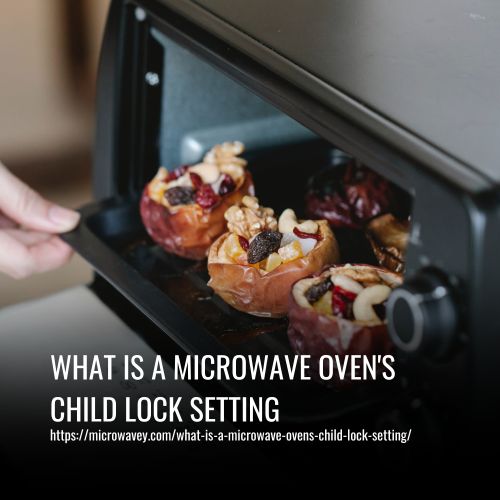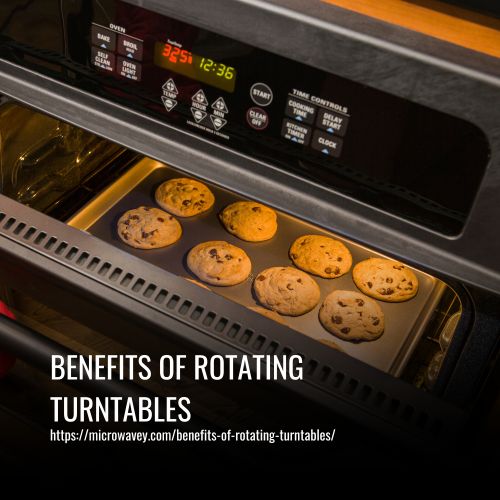The Ultimate Guide to Using Your Microwave’s Reheat Function
Using your microwave’s reheating function is a quick and convenient way to heat up leftovers or meals. Just make sure to follow the instructions on your microwave for the best results.
- Choosing The Right Container
- Knowing The Power Level
- Setting The Timer
- Using The Defrost Setting
- Monitoring The Temperature
- Rotating The Food
- Keeping The Oven Clean
- Avoiding Common Mistakes
- Using The Right Accessories
- Checking For Doneness
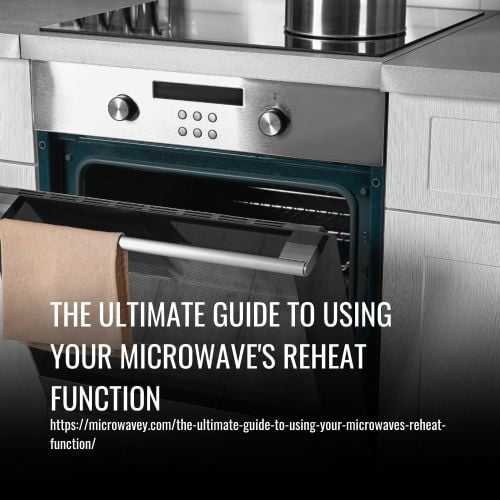
Using Your Microwave’s Reheat Function
1. Choosing The Right Container
When it comes to achieving the best results from your microwave oven’s reheat feature, choosing the right cookware materials is key. I recommend selecting containers that are specifically labeled as ‘microwave-safe’ since they won’t get too hot or melt in the microwaves and can provide you with even heating throughout. Glass, ceramic, plastic dishes, and storage bags should all work fine for most reheating strategies. Just make sure to check if any of these contain metal parts before using them; otherwise, sparks may occur!
To ensure an evenly cooked meal without cold spots or overcooking certain areas, try not to stack food inside your dish – keep things spread out instead. That way, each bite will be just as flavorful as when it was first made!
2. Knowing The Power Level
Reheating food in a microwave is much like taking a journey. The result of your trip depends on the route you take and how well you prepare for it. To get the best results from your oven’s reheat feature, here are some tips to keep in mind:
- Adjusting Wattage: When microwaving something that was previously cooked or frozen, always set your wattage at lower levels – around 50% power should do. This will help ensure even heating and prevent burning parts of the dish.
- Pre-Heating Oven: Before starting to cook, preheat your oven by running it empty for 30 seconds with the highest settings available. This is especially helpful when cooking large dishes or thick foods since they require more time to heat up properly.
Use these simple steps to guarantee great tasting reheated food every time! Seasonings can also be added before or after as desired; experiment with different flavors and techniques to find what works best for you. With patience and practice, anyone can become an expert in using their microwave’s reheat feature!
3. Setting The Timer
When it comes to the best results from your microwave oven’s reheat feature, timing is key. Every food choice requires its own unique setting and timing intervals. The table below outlines some of the most common foods and their recommended settings:
| Food | Setting | Time (minutes) |
|---|---|---|
| Soup | High | 2-3 |
| Pizza | Medium | 3-4 |
| Pasta | Low | 4-5 |
It’s important to note that these are just general guidelines. Depending on how much you’re trying to heat up or if there is still a little bit of moisture in the food, the time may need to be adjusted accordingly. As long as you keep an eye on it during the heating process and adjust as needed, you’ll get delicious results every time!
4. Using The Defrost Setting
I’m here to talk all about the wonderful world of defrosting! More specifically, how to get the best results from your microwave oven’s reheat feature by using the defrost setting. I’m gonna teach you all about defrosting foods and defrosting times, so you can master your microwave oven in no time!
Defrosting Foods
Are you ready to take your defrosting skills to the next level?
As a microwave oven reheat feature expert, I know that thawing frozen foods is an art form. It requires precise timing and technique in order to achieve the desired results without compromising food quality or safety. To ensure perfect cooking times every time, use slow-thawing techniques such as leaving meals at room temperature for several hours before beginning the defrost process. This will help you get restaurant-quality dishes from your microwave oven’s reheat setting!
Defrosting Times
When it comes to defrosting times, the general rule of thumb is that you should use the lowest setting possible and follow the instructions on your microwave oven’s manual. This will help ensure that food is cooked evenly and thoroughly while preventing any potential contamination or spoilage. Additionally, if storing leftovers for later consumption, be sure to separate them into smaller portions before freezing and reheat in short intervals as needed with tips like these so they remain tasty and safe!
5. Monitoring The Temperature
Reheating food in a microwave oven is an art form. To get the best results from your microwave’s reheat feature, you must monitor and regulate its heat to ensure that the food does not overcook or burn. Here are 4 tips for tracking and regulating the heat:
- Pre-heat your plate – heating up your plate before adding the food ensures that it retains more of the microwave energy over a longer period of time.
- Monitor cooking times closely – depending on what type of food you’re reheating, ensuring even coverage by stirring during the process can help avoid overcooked areas, while also preventing cold spots where bacteria may thrive.
- Adjust power settings as needed – when necessary, adjust the power setting to keep temperatures low enough so that foods don’t become dry or tough but high enough to kill any potential bacteria present in the food.
- Be sure to check the internal temperature – use a thermometer to make sure that hot spots aren’t getting too hot and exceed safe temperatures for consumption.
By following these steps and controlling how much energy and heat your microwaved meal has been exposed to, you will be able to achieve consistent results every time you use your microwave’s reheat feature!
6. Rotating The Food
Once you’ve monitored the temperature, it’s time to move on to step two of getting great results from your microwave oven’s reheat feature – rotating and stirring your food. Rotating is key for ensuring all ingredients are evenly heated throughout the dish. If there are solid ingredients in your dish, make sure they’re arranged so that heat can reach them more easily. Stirring during cooking helps redistribute any hot spots within a dish and also adds flavor as ingredients like salt or spices are mixed into the meal.
Finally, adjusting wattage is another way to help ensure even heating while using the reheat function. For example, if you set the wattage too low, some parts of your meal may not get enough heat while other parts become overcooked. On the other hand, setting it too high might cause the burning or scorching of certain foods without fully heating others. Experiment with different settings until you find one that works best for each item you’re reheating!
7. Keeping The Oven Clean
It’s important to keep your microwave oven clean so that you can get the best results from its reheat feature. Keeping it clean will also help ensure food safety since any spills or crumbs left behind create potential areas for bacteria growth. Here are a few quick tips on how to keep your microwave in top condition.
First, always store food properly before and after microwaving. This means covering dishes with lids or plastic wrap when possible, and not overfilling containers that might cause splattering in the oven. Clean up any messes as soon as they happen – never let them sit overnight! It’s also helpful to wipe out the interior of the oven after each use using an all-purpose cleaner that is safe for use in microwaves.
Doing this will prevent grease build-up which can interfere with heating efficiency and make future cleaning more difficult. With these simple steps, you’ll be able to enjoy perfectly cooked meals every time!
8. Avoiding Common Mistakes
Ah, the microwave oven reheat feature. Nothing quite like it for warming up leftovers or a quick snack! But this oft-used piece of kitchen equipment can be tricky to master. After all, if you don’t know what you’re doing, your food might not turn out as delicious as you’d hoped – and worse still, cross contamination or splattering could occur which no one wants! But fear not: with my expert tips for avoiding common mistakes, we’ll have that microwave oven working like a charm in no time.
First off is understanding how to avoid cross contamination by cleaning your dishes before each use; warm soapy water should do the trick. And then there’s the matter of splatter prevention – nobody likes having their walls covered in sauce! To ensure this doesn’t happen, simply cover your dish with a lid or paper towel while heating it. With these simple steps followed correctly every time, you’ll get nothing but superb results from your microwave oven’s reheat feature!
9. Using The Right Accessories
It’s important to use the right accessories when you are using your microwave oven’s reheat feature. Using glass, ceramic or paper plates is best as they do not absorb much energy and cook more evenly than plastic dishes. It’s also a good idea to cover your food with a lid or damp paper towel so that it doesn’t become dry from the heat of the microwave.
Storing food at proper cooking temperatures in the refrigerator will help ensure that it reheats properly. In addition, avoiding overcrowding helps maintain even heating throughout the dish, giving you better results. So when reheating leftovers, make sure to follow these tips for optimal results every time!
10. Checking For Doneness
It’s important to make sure you’re getting the best results from your microwave oven’s reheat feature. Knowing how to check for doneness and monitor heat is key to ensuring that all of your food comes out perfectly cooked every time! Did you know that over 80% of people who use a microwave oven do not use the recommended settings? That means they are potentially undercooking their food or having it come out dry. To avoid this, here are 3 tips to follow when checking for doneness:
- Check humidity – Use a thermometer probe to test the internal temperature of your food before consuming it. This will ensure that everything has been heated properly.
- Monitor heat– Keep an eye on the timer as well as any indicators on the control panel so you can be aware if something is cooking too fast or too slow.
- Test texture – Take a small bite into the food after it’s finished heating up in order to determine whether it’s done enough or needs more time in the oven.
By following these simple steps, you’ll never have to worry about overcooking or undercooking your food again! With just a few adjustments, you can ensure that each meal is as delicious and nutritious as possible every time you reheat it in the microwave oven!
FAQs
When it comes to reheating food in the microwave, safety and convenience are of utmost importance. As an expert in using a microwave oven’s reheat feature, I always recommend using microwavable containers that are specifically designed for safe use with your microwave’s wattage and size. These containers will allow you to get the most out of your appliance by evenly distributing heat and reducing cooking time. Furthermore, these containers may help reduce any potential hazards associated with prolonged exposure to high-powered microwaves when compared to other materials such as plastic or glass. Lastly, these specially made containers can be used to accurately gauge reheat times so you can make sure your food is heated through without overcooking or burning it.
Wow! Reheating food in the microwave can be a total game changer when it comes to saving time and still enjoying delicious meals. But you have to know how much power to use for reheating food, or else your meal could be ruined beyond repair! To get the best results from your microwave oven’s reheat feature, make sure that you are following all of the safety guidelines and using the right cooking times. This will ensure that your food is heated evenly and quickly without any hassle whatsoever. Plus, understanding these basics of microwave safety can help prevent dangerous situations that could put your health at risk. So don’t forget: always follow proper protocols when microwaving anything – it’s worth it for those mouthwatering leftovers!
It’s totally safe to reheat food in the microwave more than once, as long as it’s done correctly. When rotating leftovers, make sure you break them down into smaller portions and spread them around the plate evenly for even heating. Also, be mindful of your microwave power setting – using too much power can cause burnt or overcooked foods. As a general rule, you should only heat the food for the recommended time on its package. This will ensure that your reheated food is cooked through properly without over-cooking it.
When reheating food in the microwave, it can be difficult to know when it’s done. The best way is to pay attention to the temperature of your food and how long you’ve been reheating for. You want your food to reach a safe internal temperature of 165°F, so I’d recommend using an oven thermometer or instant-read thermometer if possible. As for time, depending on what type of food you’re heating up and its size, it usually takes around 2 minutes per 8 ounces of food. Keep checking every 30 seconds after that until the desired temperature has been reached.
As the old adage goes, a watched pot never boils.’ This rings true when it comes to reheating food in your microwave oven. To reduce the risk of burning food and get the best results from your microwave oven’s reheat feature, it’s important to pay close attention to cooking times and ventilation tips. The key is to monitor the food as much as possible without opening the door too often; this will help you avoid overcooking or drying out your meals. When using a defrost setting, make sure there are no ice crystals left before microwaving on high power. Finally, if you’re unsure about how long something should be heated, start with shorter time intervals and gradually increase until desired temperature and texture are reached.
Conclusion
In conclusion, the microwave’s reheat function is a convenient and time-saving feature that can help you enjoy leftovers without sacrificing taste or texture. By following these tips and tricks, you can make the most out of your microwave and enjoy perfectly reheated meals every time. So next time you have leftovers, don’t hesitate to press that reheat button and savor your meal all over again!

